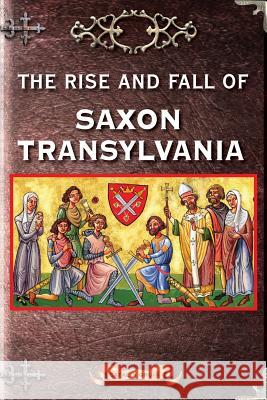The Rise and Fall of Saxon Transylvania » książka
The Rise and Fall of Saxon Transylvania
ISBN-13: 9781492354970 / Angielski / Miękka / 2013 / 72 str.
Transylvanian Saxons The saga of a civilization in 4 parts: colonization, splendor, decline and today's touristic heritage Underdeveloped country seeking investors - this was the slogan of Eastern Europe after the fall of Communism. Like flowers competing for pollinators, its states outdid each other in advertising economic privileges and legislative facilities to attract Western investors. The different governments which took turns in the last 15 years in the Victoria Palace from Bucharest did not bothered to go beyond mere declarations of good intentions; but, while TV channels broadcast their formal speeches, the exodus was underway for the most enterprising part of the population, the only one related to the West: Transylvania's German guests. The Saxons: 800 years of history in Transylvania 800 years ago, like managers looking for personnel to recruit, the first Hungarian kings invited guests from the West to develop the Transylvania they were gradually conquering. Although it lay at the edge of the known world, the Saxons let themselves be lured by this promised land, a natural fortress full of riches, with the Carpathians for walls. They came, they worked, and they built in Transylvania a civilization which reached its apogee in the sixteenth century. Pandora's Box opened wide for the Saxons after the Second World War, too. Less than 15.000 stayed in Romania. Most of them returned to the West, seeking the same thing that had brought their ancestors here: prosperity. Their heritage, however, remains and calls us to discover it. The Rise and Fall of Saxon Transylvania is a concise journalistic of the Saxon civilization, following its history through: The Colonization: The Promised Land. Like managers with vacancies in the organizational chart, the first Hungarian kings invited guests from the West to develop a Transylvania that was in process of being conquered. The Rise: Sibiu, Grand Square, no. 8. The Hecht House was the home of a great medieval merchant. Its metamorphoses and the series of its owners shape the story of the rise of the Transylvanian Saxons. The Decline: Pandora's box. The star of the Saxons began to fade in the 18th century, when they failed to obtain the 23rd validation of their privileges. In the era of nationalism, they dealt with a new kind of ruler - the nation state - who was determined to assimilate them at any cost. The present: Romania's German heritage. The majority of the Saxons returned to the West, seeking the same thing that had brought their ancestors here: prosperity. Their heritage, however, remains and calls us to discover it. Dear Reader - stop here for a second, please You should know from the very beginning this is not an exhaustive, academic paper. Author Catalin Gruia is a veteran journalist who has written and reported for the Romanian edition of National Geographic for over 10 years. What you'll find here is a concise journalistic account of the Saxon civilization. "For almost a year and a half, I traded in Bucharest for a little country house in Mures. During that time, taking advantage of the trips in which I followed the Saxons' traces for a National Geographic documentary, I discovered in Transylvania a foreign country. And I fell in love with Siebenburgen " * For behind the scenes information about Gruia's books www.catalingruia.com"












